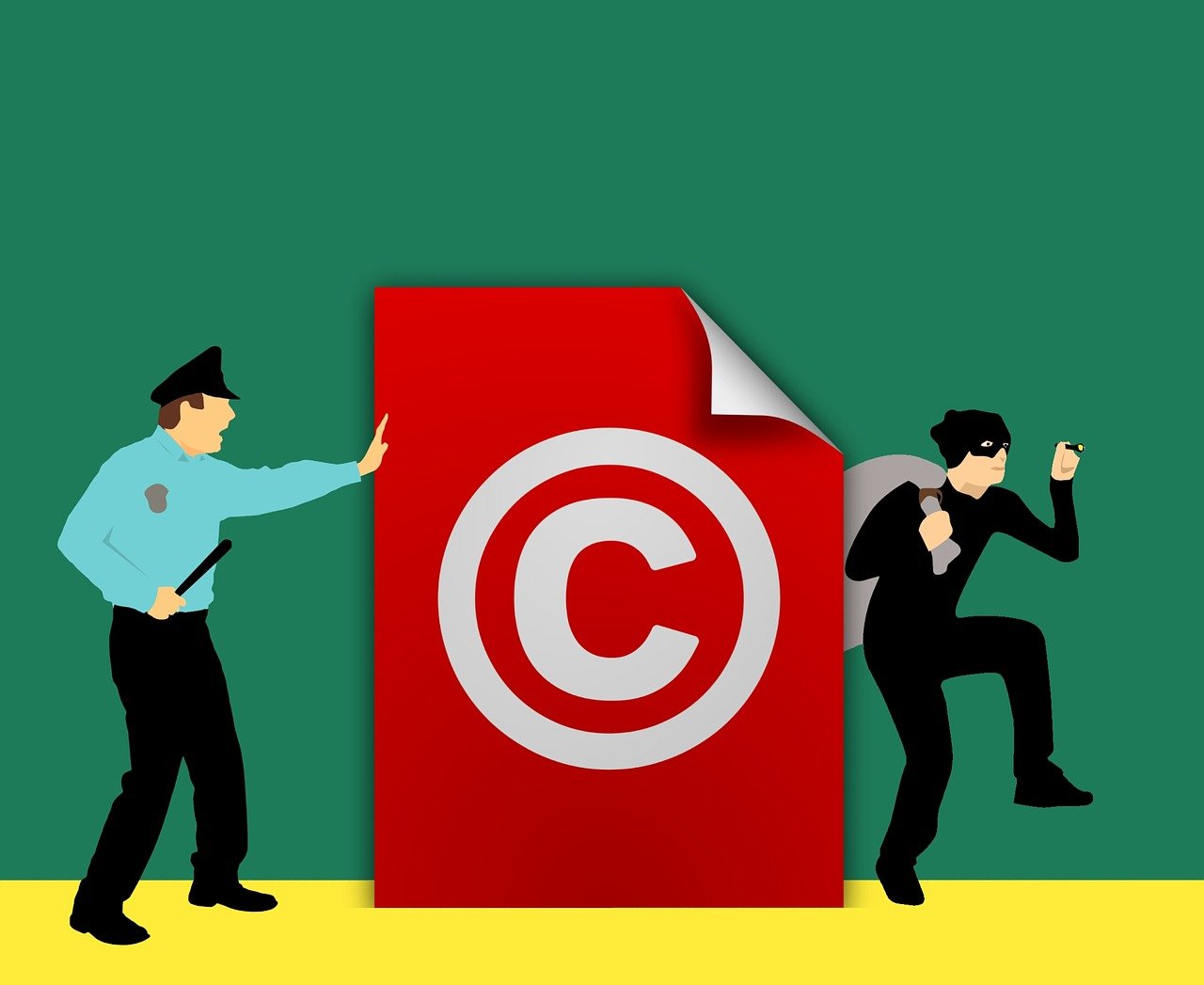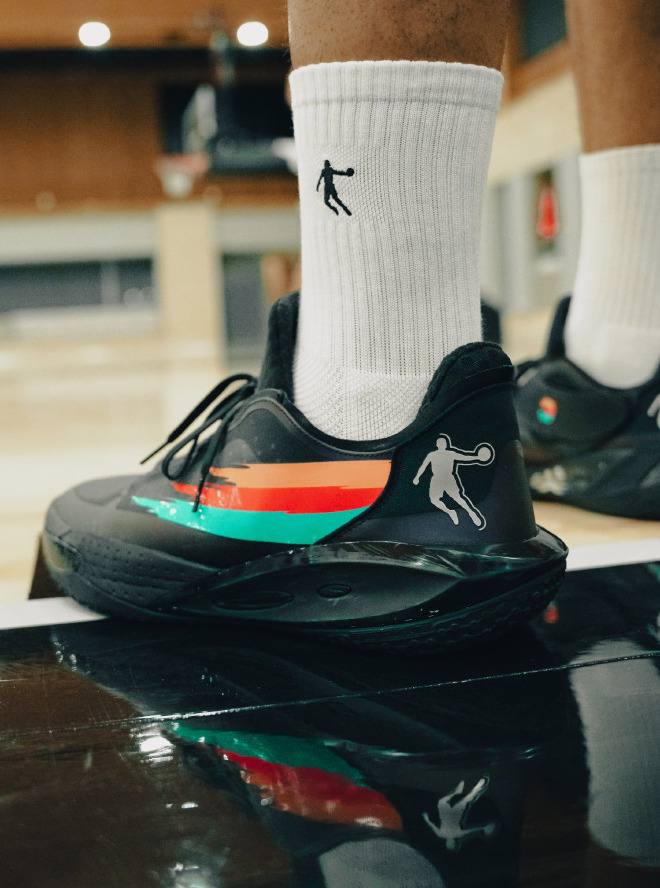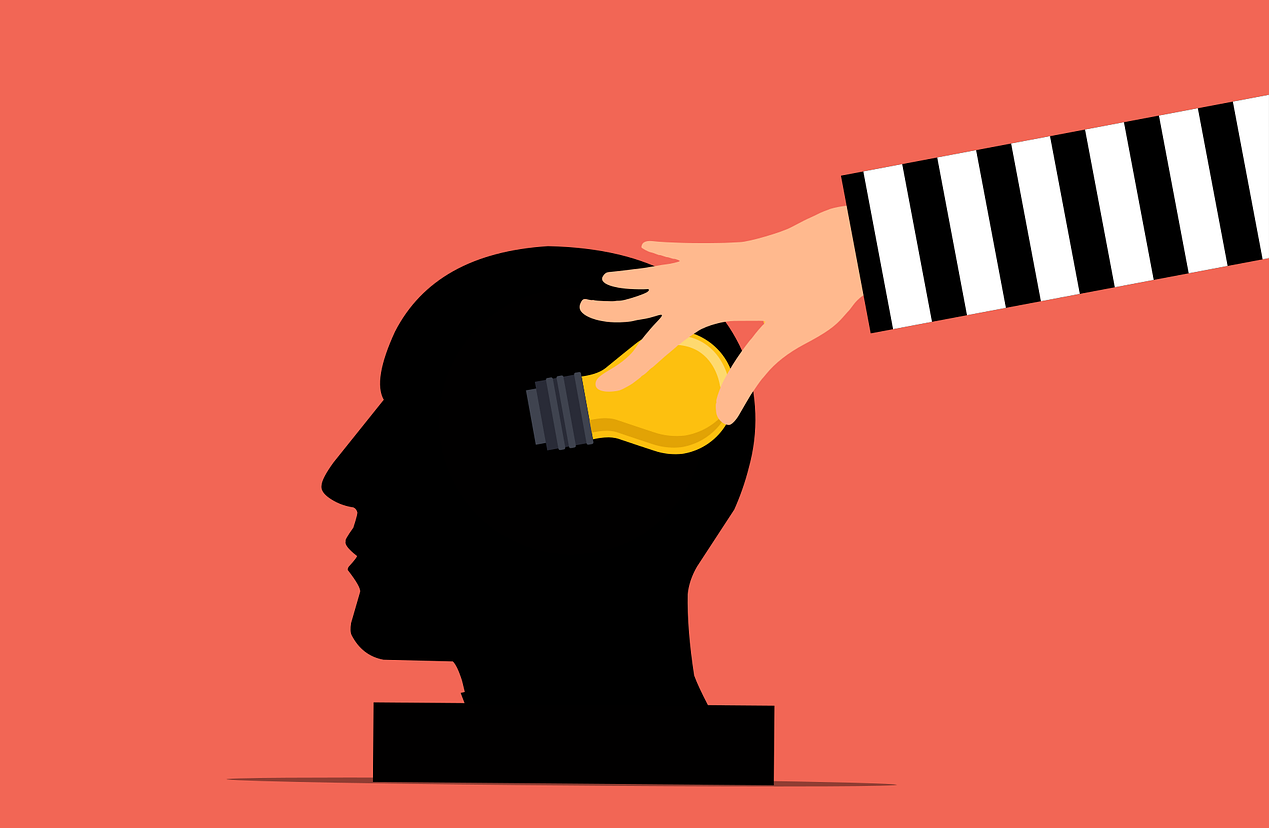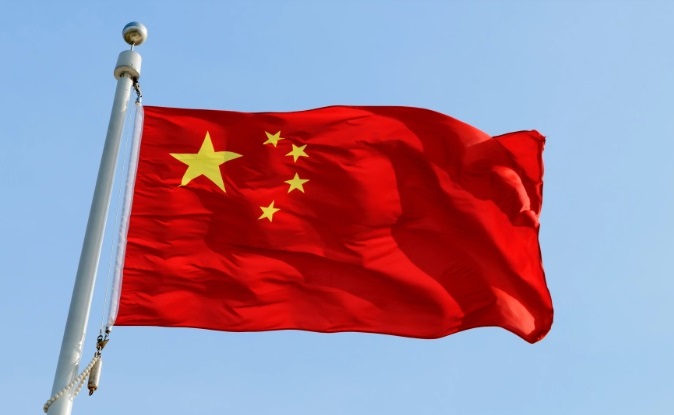China ranked first in the world for patent applications in 2022, filing an astounding 1.6 million.
The following year saw 921,000 invention patents, 2,090,000 utility patents, 638,000 designs and almost 5 million registered trademarks, as per Sonoda & Kobayashi Intellectual Property Law.
With its fast-paced lifestyle and the seemingly boundless opportunities it presents, China inspires many to pursue their entrepreneurial dreams and side hustles.
As the country continues to streamline processes for visitors and business professionals alike, making it increasingly straightforward to engage with its vast market, the moment has never been more ripe to explore these avenues.
However, with great opportunity comes the need for vigilance and preparation.
Understanding China's modernized intellectual property (IP) laws and the intricacies of its product patenting landscape is crucial for anyone looking to make their mark without risking their hard-earned creations.
Ensuring that your ventures are protected under these laws can mean the difference between success and seeing your efforts fall into the wrong hands.
Legal Jargon-nauts
On January 20, 2024, amendments to the Implementing Regulations of the Chinese Patent Law officially took effect, marking significant developments in the Chinese patent landscape and aligning it more closely with international practices.
In order to navigate this complex legal framework, we have reached out to Shanghai-based lawyer Luis-Felipe Borja, who shares insightful perspectives on the evolving landscape of Chinese IP law.
 Borja speaking during a symposium at the University of Shanghai. Image via Luis-Felipe Borja
Borja speaking during a symposium at the University of Shanghai. Image via Luis-Felipe Borja
There are four different types of patents: Invention Patents, Utility Model Patents, and Industrial Product Design Patents — each with its unique scope, duration, and review period.
Borja emphasizes the importance of novelty, creativity, and practicability in the patent application process, which can span years depending on the patent type.
Patents and trademarks are territorial and must be registered in China if they need to be protected.
For example, Étude, a brand owned by South Korea's Amore, was preemptively registered by distributors in China, and had to switch to Étude House when it ventured into this market.

The official Taobao store is listed as ETUDE HOUSE but most of the products only carry the brand name ETUDE. Screengrab via Taobao
Ultimately, it's a big game of 'dibs' in patent law, and the review period largely serves the purpose of carefully sifting through the records to make sure that your patent is unquestionably unique.
For those seeking to internationally protect their idea, there are currently two recognized pathways for expanding the reach of a patent beyond borders: the Paris Convention (Paris Convention on the Protection of Industrial Property) or the PCT (Patent Cooperation Treaty).
What are those, you ask? Well:
Paris Convention on the Protection of Industrial Property:
An applicant for a patent for an invention, utility model, or industrial product design may, starting from the date of first filing an application with one of the Member States, file an application with another Member State for the same invention within a certain period (12 months for invention or utility model, 6 months for industrial product design), and the date of the first application shall be the date of the subsequent application.
The conditions are that the applicant must have completed the first qualified application in one of the Member States, and that the content of the first application must be identical to the content of a later patent application to another Member State.
The Paris Convention effectively allows you to be proactive in the patent application process for other countries by giving you a head start from the time of your first application.
Patent Cooperation Treaty
Unlike the Paris Convention, the PCT is an international agreement between countries on patent protection and does not deal with other industrial property issues such as trademark and territorial protection.
The filing of patents filed by other countries through the PCT extends the retroactive period of patent protection to 30 months.
In the process of PCT entering China, the period is 28 months.
After this period, you can apply for restoration within 2 months, but you need to pay the priority restoration fee.
The maximum entire priority period can only be 30 months.
For trademarks, they can be registered internationally by the Madrid System, of which China is also a member.
But remember that, in practice, courts demand trademarks to be registered in China to recognize them.
The party who registers first has the rights to the patent in China — you snooze, you lose.
2024 Updates to Patent Law
• Closer Alignment with the International Regime under the PCT.
• Implementation of the Hague Agreement: International design applications designating China are now recognized as domestic applications, with their international registration dates being considered as the application dates in China.
• Good Faith Principle: A new principle prohibits false or fraudulent representations during the patent prosecution and open patent license processes, with penalties for violations.
• Increased Due Process and Transparency: The new regulations require additional disclosures by the China National Intellectual Property Administration (CNIPA), including information on declassified patents and patent term compensation. The amendments also introduce a requirement for the CNIPA to notify applicants of decisions in the confidentiality review process, replacing the previous 'deemed approval' rule.
• Partial Design Patents: The regulations now allow for partial design patent applications using a combination of solid and dotted lines to delineate protected parts.
• New Drug Patents: There are provisions for three types of new drug patents, with the possibility of patent term extension to offset marketing approval delays, under certain conditions.
• Expansion of Priority Basis for Design Patent Applications: Design patent applicants can now claim the priority of earlier invention or utility model patent applications in China.
• Patent Evaluation Report: The scope of eligibility to request a patent evaluation report has been expanded to include alleged infringers and applicants whose applications have been approved by the CNIPA.
• Delivery of Electronic Service: The regulations formalize electronic service delivery, with the service date being the date of arrival in a recognized electronic system.
Popping Your First Patent
Josh Boyer, a Canadian entrepreneur based in Guangzhou, shares his journey through the maze of patent applications.
Boyer, the brain behind Guangzhou NVNT Science and Technology Co., Ltd, has navigated the complexities of securing a design patent for his innovative ergonomic wrist rest for computers — a product designed to revolutionize the user experience for gamers and professionals alike.

Image via NVNT
Boyer underscores the importance of a design patent in protecting the unique visual and physical aspects of a product, emphasizing that while utility patents cover the functional aspects of inventions, design patents safeguard the aesthetic elements, ensuring that no one can produce a 1:1 copy of the design.
"One interesting thing is that patents in China cannot use your English name. You need a Chinese name," Boyer tells us, "but it can be any name you want."
Boyer was advised to transliterate his name into Chinese, leading him to choose a five-character Chinese name.
Registering under a Chinese moniker ensures that the patent holder's name is compatible with local systems and can prove useful in legal scenarios, especially since he chose an unconventional set of Chinese characters which are phonetically similar to his English name.
Boyer enthusiastically introduces NVNT's recently acquired patent, "Our newest product is an ergonomic wrist rest for the computer. Unlike traditional wrist rests that stay in one spot, we designed a wrist rest that actually moves with your hand."
"This design," Boyer argues, "is genuinely ergonomic because it facilitates stability and movement, while promoting better blood flow and accuracy in gaming."
Initially, Boyer faced the choice between a design and utility patent.
Boyer points out the limitations of the product's eligibility for a utility patent due to its lack of moving parts — he wasn't reinventing the wheel.
"The product itself is a wrist rest that moves with you," he explains.
"But since it doesn't have any moving components, it doesn't really qualify for a utility patent because mousepads already exist."
This led him to opt for a design patent, which protects the physical and visual design of the product rather than its utility or function.
 Image via NVNT
Image via NVNT
Boyer details the prototype process, highlighting the importance of starting with a 3D design to visualize the product before creating a tangible prototype.
He uses software like Blender for 3D modeling and mentions other available tools, such as Microsoft 3D Builder and Google SketchUp.
When it comes time to produce a prototype, he highly recommends WeNext, a large-scale automated Shenzhen-based 3D printing company.
WeNext offers rapid production with options for 24, 48, or 72-hour completion times.
 Image via @Wenexttech/X
Image via @Wenexttech/X
For the first few iterations of his product, he used his at-home 3D printer, which could print objects up to 10cm x 10cm and cost around RMB800 to 900 (including three or four spools of plastic for printing).
Even these home versions are fairly advanced, he adds, giving the example that designs can be sent and monitored via a smartphone app.
But for a more professional finish, Boyer turned to WeNext for an SLA (Stereolithography) print, which provided a smooth finish but also required the product to be hollowed out to reduce weight, a crucial aspect for its ergonomic function.
After finalizing the design and creating a prototype that met his specifications, Boyer reached out to a patent agent he found on Taobao for the submission process.
The agent required high-contrast images of the product from nine different angles to thoroughly understand its design.
If the design included specific internal structures, such as a lattice structure for increased strength within, this could be included in the patent application by providing a cross-sectional view and detailed description.
Boyer applied for his patent in the third week of August, expecting a relatively swift process based on initial estimates.
However, he received his patent later than anticipated, in February of the following year.
Initially, he was informed that the patent would likely be issued by November, but due to various delays, this timeline was extended first to December, then January, and finally February.
 Image via Pixabay
Image via Pixabay
"I would follow up with this patent agent every month and just ask them about the status of it. Once the patent was approved, they informed me that I needed to pay the first year's fee — a few hundred RMB — to be officially issued the patent."
Boyer also points out a modern aspect of China's patent system.
"Patents in China are all digital. You will not get a hard copy of the patent," Boyer adds mournfully.
We both admit, revealing our true ages, that a framed copy on the wall would be preferential.
UPDATE: Boyer informed us on June 3 that he had received his second patent in China.
Copy Cops

Image via Pixabay
Once you have your patent, you still need to be on the lookout for copycats.
A patent is the evidence you bring to court, but there aren't necessarily 'patent police' out there searching on your behalf.
We ask Borja to share his experience of investigating patent claims.
Once a client has employed his firm to build a case, they certainly have their work cut out for them.
In cases involving the tracking and recording of counterfeit goods in 'fake markets,' the task is almost simpler than pursuing a claim on e-commerce platforms.
He acknowledges the complexities involved in shutting down online counterfeit operations and the necessity of technology-based solutions like ActionIP to address these challenges.
His insights into the proactive measures taken by brands and the collaborative efforts between private and government entities offer a glimpse into the continuous battle against IP infringement.
Apple vs. Proview (2012)
The IP dispute between Apple and Proview Technology (2012) revolved around the 'iPad' trademark.
Proview Technology, a Chinese electronics company, claimed to have registered the iPad trademark in various countries, including China, as early as 2000, well before Apple launched its iconic tablet.
Apple, believing it had acquired the global rights to the iPad trademark through a purchase from a Proview affiliate in 2009, began selling its tablet under the iPad name.
However, Proview contested Apple's claims, arguing that the rights in China were not included in the deal because they were held by a different Proview entity, which did not participate in the 2009 sale.
The legal battle escalated, with Proview initiating lawsuits in China to stop Apple from using the iPad trademark, while Apple argued it rightfully owned the trademark and accused Proview of attempting to extract more money after the initial sale.
The case garnered significant attention due to the high stakes involved and the potential impact on Apple's sales and operations in China, a critical market for the company.
Ultimately, in July 2012, the dispute was settled when Apple agreed to pay USD60 million to Proview Technology for the rights to the iPad trademark in China, thus allowing Apple to continue selling its tablet without any trademark issues in the Chinese market.
According to Borja, the main function of the trademark is to identify the source of the goods; since consumers have already established an association between the iPad and Apple products, it would have caused confusion among consumers if the iPad trademark is not awarded to Apple.
In the eyes of Chinese courts, Proview Shenzhen Company definitely participated in the trademark transfer activity; Mai Shihong, director of the legal department of Proview Group, who signed the transfer agreement, is also a member of the legal department of Proview Shenzhen Company.
Nonetheless, due diligence must be used for brands to enter the Chinese market as whoever registers first has the right to use, and it is a reality companies must face.
Jordan vs. Qiaodan (2020)
The Jordan vs. Qiaodan case, decided in 2020, was a significant IP dispute involving the legendary basketball player Michael Jordan and Qiaodan Sports, a Chinese sportswear company.
'Qiaodan' is the transliteration of 'Jordan' in Mandarin, and the case centered on Qiaodan Sports' use of the name and imagery closely associated with Michael Jordan without his permission.
For years, Michael Jordan sought legal action against Qiaodan Sports for using his Chinese name and jersey number (23) to market and sell their products, arguing that the company was misleading consumers and improperly profiting from his personal brand and reputation.
Qiaodan Sports, on the other hand, contended that the name was not exclusively associated with Michael Jordan and that they had lawfully registered trademarks for the Qiaodan name and logo in China.

Image via @中乔体育/Weibo
The legal battle spanned nearly a decade, with numerous lawsuits and appeals.
The turning point came in 2020 when the Supreme People's Court of China ruled in favor of Michael Jordan.
The court recognized that the name 'Qiaodan' was closely associated with Michael Jordan and that Qiaodan Sports had violated Jordan's right to his name and capitalized on his fame without authorization.
The court's decision ordered Qiaodan Sports to stop using the Chinese transliteration of 'Jordan' and related imagery that could mislead consumers into believing there was an endorsement of or connection to the real Michael Jordan.
This landmark ruling was celebrated for its acknowledgement of personal name rights and its protection of foreign celebrities' rights in China, a country where IP enforcement has previously been challenging.
In this specific case, Borja points out that Jordan had to raise the case to the Supreme People's Court.
This case does offer an interesting characteristic property of registering any copyright or trademark in China.
Brands must ensure that they register the name in the original language but also protect the pinyin translated version in Chinese characters — something which is still overlooked by many foreign companies entering the Chinese market.
Apple vs. Luo and Ma (2022)
In a notable case adjudicated by the Shenzhen Intermediate People's Court in Guangdong province, China, in 2022, defendants Luo XX, Ma XX, and eight others were convicted of the crime of counterfeiting registered trademarks owned by Apple Inc., specifically 'AirPods' and 'AirPods Pro.'
These trademarks, associated with earphones, among other products, were illicitly used by the defendants to sell counterfeit Bluetooth headsets for profit.
Unique to this case was the method of trademark infringement: the counterfeit products, when connected to an Apple mobile phone via Bluetooth, triggered a pop-up window displaying the 'AirPods' or 'AirPods Pro' trademarks, misleading consumers into believing they were using authentic Apple products.
The first-instance judgment by the People's Court of Longgang district, Shenzhen, found the defendants guilty, sentenced them to prison terms ranging from two to six years, and imposed fines.
Despite appeals from some defendants, the second-instance court upheld the original judgment, emphasizing the significant revenue generated from the sales of the infringing headphones, amounting to RMB22,106,296.08.
This case was distinguished by its interpretation of 'use' in the context of trademark counterfeiting.
The court clarified that use extends beyond tangible applications (like product packaging) to include any commercial activity that identifies the source of goods, including digital displays during the product pairing process.
By displaying the 'AirPods' and 'AirPods Pro' trademarks during Bluetooth pairing, the defendants falsely indicated Apple as the source of the counterfeit products, misleading consumers and thus committing trademark infringement.
The ruling, in this case, is significant for its acknowledgement of new forms of trademark crimes facilitated by digital and 'Internet of Things' (IoT) technologies.
It underscores the courts' adaptability in protecting IP rights in the evolving digital economy, setting a precedent for correctly defining trademark use in the digital age and bolstering efforts to combat IP rights infringement facilitated by technological advancements.
Regarding the counterfeits still available on major e-commerce platforms, Borja insists that we keep in mind the court ruling was against one specific counterfeit AirPods manufacturer.
"For Apple, it is a constant battle to find other factories that sell such counterfeits in China. Luckily the central government has pushed on incentives to private companies that develop technology-based solutions to solve this problem."
Borja adds that his firm has developed a product called ActionIP, which uses investigators and lawyers all around China to track and take down manufacturers of counterfeits.
 Image via @ZardaHexx/X
Image via @ZardaHexx/X
"A case can be settled in various ways," Borja continues.
"Through negotiation or by requesting a decision through local courts. Even during litigation, negotiation can be reached between the plaintiff and the defendant. If it reaches court judgement, it will be the judge who determines the compensation, timeframe, and how it should be delivered to the plaintiff. A compensation is not only a monetary value — it could also fall upon property, stocks and other assets duly investigated by the lawyer involved."
There are numerous ways to search for enforcement and protection for IP in China.
Just to name one, during Borja's time in China, he was assigned to track and record counterfeit versions of a client's products in several 'fake markets' in Beijing.
To build the case, he would pretend to be a foreign buyer and go shopping for the target products.
When he identified his client's products, he would record inside the offending store and report back to the client for approval to take action.
With the client's approval, his firm would send a letter of demand (LOD) to the landlords of such markets, warning them to stop selling counterfeits of the client's brand.
The standard practice was to check three times and, if the landlord didn't take immediate action, request that the police raid the stores then confiscate and destroy the counterfeits.
This method was very effective and, as years have passed, Borja says many of the fake markets in Beijing have since closed down.
Now, the problem has transitioned onto e-commerce platforms.
The method has become a little more complex as an investigation needs to be made to close the shop within the online platform and still acquire the fake goods for notarization.
Then, they must locate the seller to determine whether they are just a channel of distribution or the actual factory.
"Sometimes there's a lack of knowledge of the system, a lack of resources, or a lack of interest," Borja elaborates, "as they see IP as a 'luxury service' towards which new companies prefer not to direct their money. Sometimes emerging international companies use such counterfeits to their advantage on a business mind that perhaps counterfeits are making their brand famous in the market — for now."
Imagine a scenario where company XX is manufacturing a new piece of wearable tech.
They file their patent and go into production.
Six months after the release of their product, they begin to see similar products on Taobao.
Borja reinforces that patents take a long time to register, even without any appeals to patent registration.
In this case, the application date will prove crucial if a claim is made in court.
Now, let's imagine a scenario where company YY is a distributor of cosmetic products.
The cosmetic products have their own various brands, but the IP logo and distributor's brand become synonymous with quality products based on company YY's strong social media presence.
Company YY begins to see other products being sold online with their logos and screenshots of their livestreams in which the various products were originally advertised.
The lawyer representing company YY must begin the investigation by determining if YY is an exclusive distributor of the cosmetic product company.
If YY does not have an exclusive distribution contract with the cosmetics company, the case needs to be studied in order to warn the owner of the trademark (the manufacturer) of possible infringements on their trademark online.
They also need to keep in mind that company YY being a distributor online doesn't mean they necessarily have exclusivity on promotion and marketing of the products online.
Sometimes, companies make distribution agreements with multiple companies to oversee logistics and movement of their products within a certain region or market.
"Legal fees and structures are confidential and negotiated between the clients and the law firms representing them," exclaims Borja.
"Each law firm would make decisions based on the risks of each case. As a general rule, there would always be an initial fee plus a success fee once the case is settled through negotiation or a court's decision."
"There is no single method to answer these questions as each would depend upon the case and what the lawyer can find through due diligence and thorough investigation of the defendant's assets, company structure, investments, paid capital, etc."
"There really is no simple answer to this question," admits Borja.
"Sometimes the cases seem to be IP related but, after proper analysis by a lawyer, there are other parties and other legal aspects involved. This is why we spend many years in law school."
Scan the QR code to connect with H&W Law Firm Group.

Services: Intellectual Property, Civil and Commercial disputes, company establishment, foreign investment, labor disputes.
Contact email: luisfborja@hwlawip.com
Luis-Felipe Borja has been enhancing his expertise in law since his first year at the Universidad de las Americas Law School in Ecuador.
His early career included internships at District Civil Courts and positions at several prominent firms within Ecuador, such as Fabara Abogados and Deloitte, where he continually sought experiences that would contribute to his academic development.
Following his graduation with a bachelor's degree in law from Ecuador, Borja's interest in the burgeoning business and diplomatic relations between China and Latin American countries led him to pursue further education.
Intrigued by the differences between the business cultures and legal systems of these regions, and the potential legal challenges of conducting business between them, he applied and was accepted for a master's degree in Chinese law at Peking University (PKU) in 2013.
This opportunity was supported by a Chinese Government Scholarship, allowing him to study Mandarin Chinese for two years before undertaking his master's studies on the PKU Beijing campus.
During his final year at PKU, he interned at a local Beijing firm specializing in IP.
He got involved in investigating local markets to identify potential counterfeits of international clients' products and brands.
Upon graduation, Borja joined Andun Intellectual Property Services in Shenzhen as a technology/legal services provider.
He currently serves as a professional partner at the H&W Law Firm Group in Shanghai, an associate at DeltaLegal in Ecuador, and an honorary advisor at the Mexican Chamber of Commerce in China.
From an academic and research perspective, Borja is an active member of the Latino and Hispanic American Academic Network on Sinological Studies based in Costa Rica and ALADAA Ecuador (Latin American Association for Asian and African Studies).
His scholarly work includes publications on Hispanic-Chinese comparative law in coordination with the Ibero-American and Caribbean Institute of Law and Politics at the Chinese University of Political Science and Law and the Supreme People's Procuratorate of the People's Republic of China.
Additionally, he has contributed to research on the history of Chinese migration and migration laws in Ecuador, demonstrating his comprehensive understanding of and commitment to the field of international law.
[Cover image via Pixabay]























0 User Comments